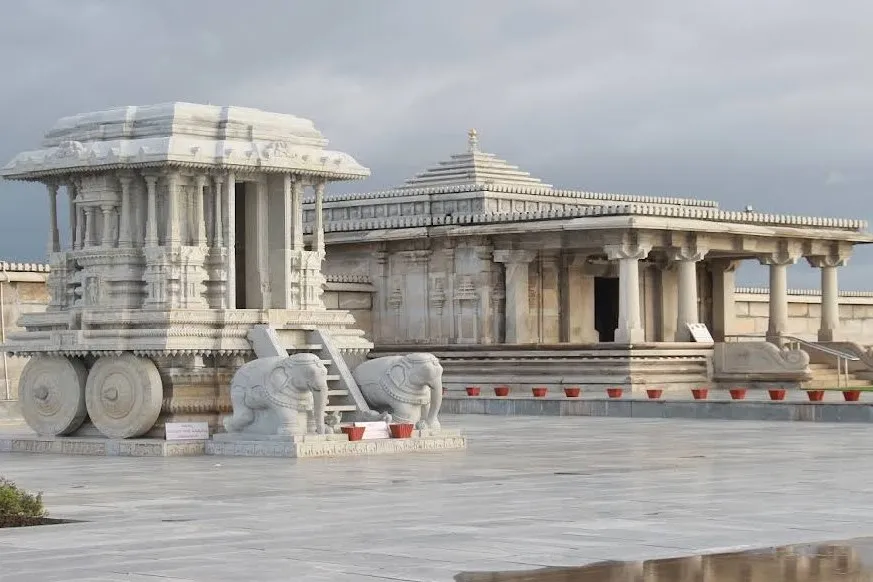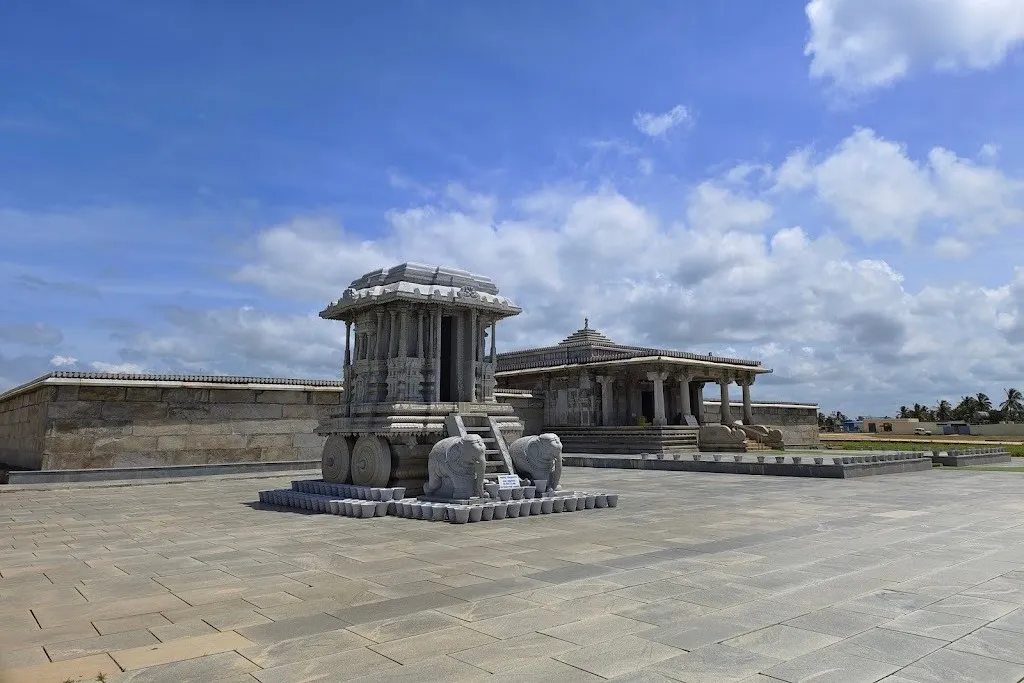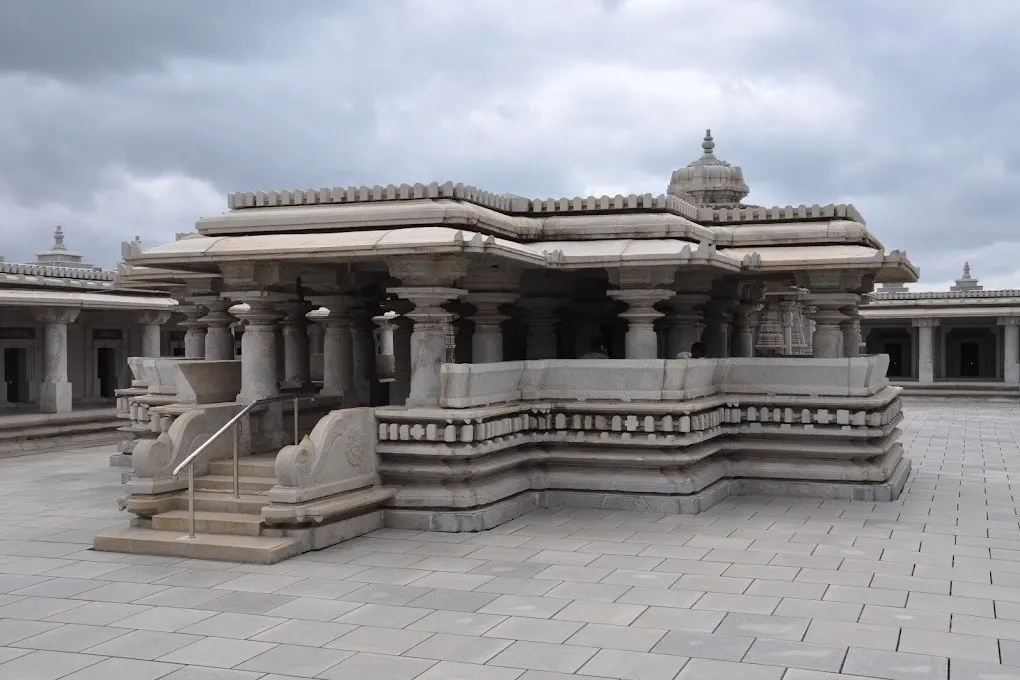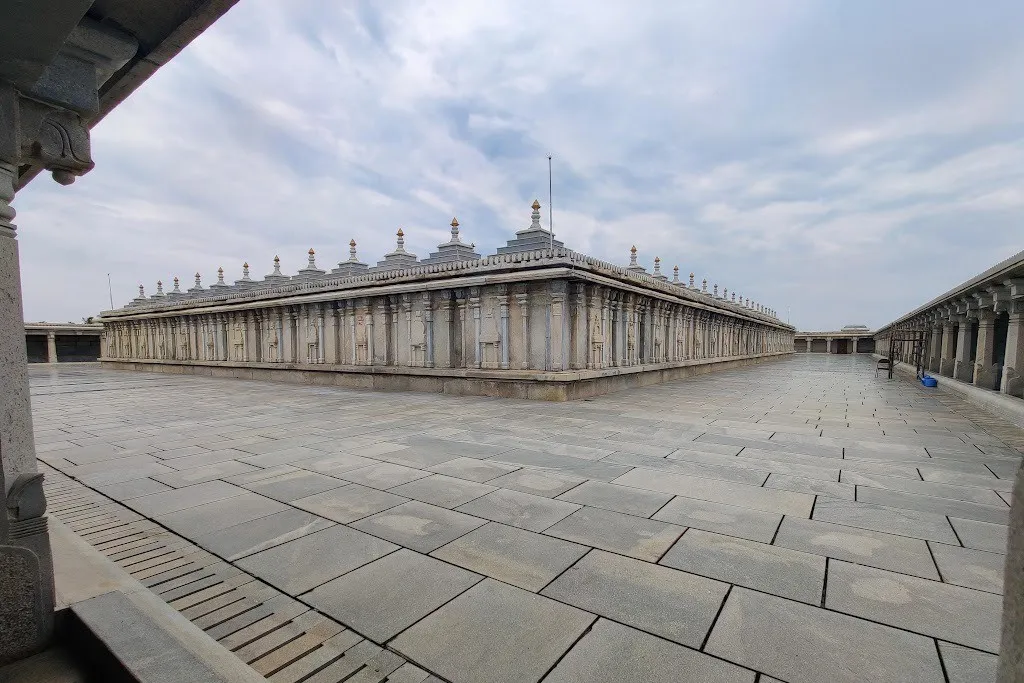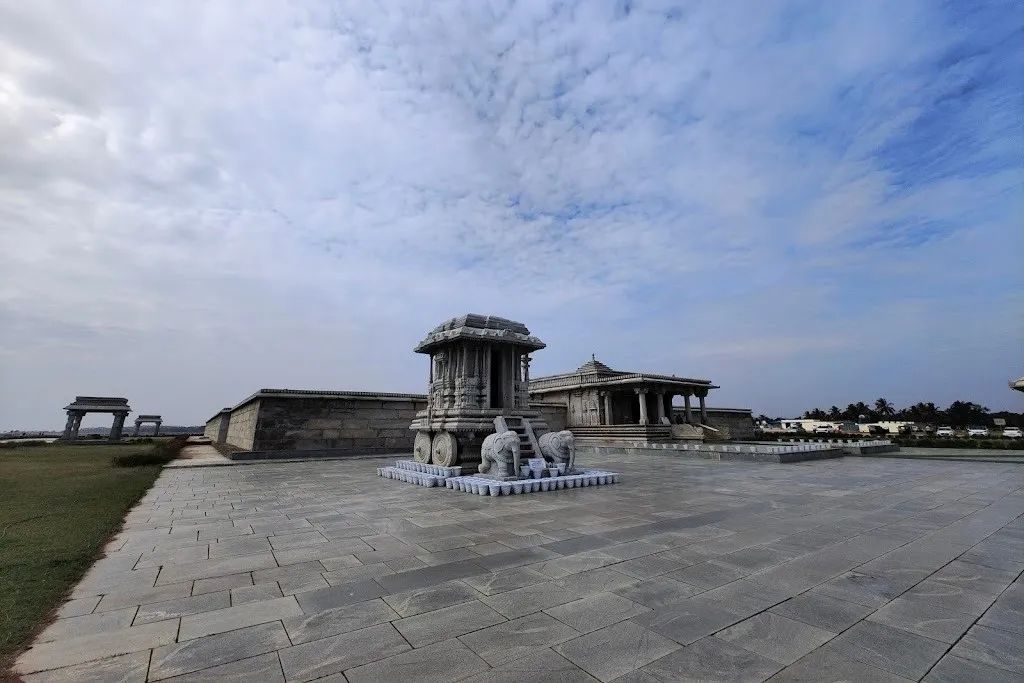Venugopala Swamy Temple is located at New Kannambadi near Krishnaraja Sagar in Mandya District of Karnataka State. It is an example of Hoysala architecture in Karnataka. This temple was built in the 12th century AD i.e. during the time of the Chennakesava temple at Somanathapura in Mysore district. But after the construction of Krishna Raja Sagar Dam, the temple was submerged. Under the guidance of Shri Hari Khode, the Khode Foundation undertook the task of relocating and renovating the temple. The relocated temple is in the original shape and design and the layout is computerized and each stone is marked with numbers to relocate them in the same architecture.
Venugopala Swamy Temple is about 152 km from Bangalore and 29 km from Mysore city. 52 km and 47 km from Mandya city.
The Venugopala Swamy Temple was built in the 12th century AD around the same time as the Chennakesava Temple of Somanathapura, Mysore district.The new Venugopala Swamy Temple is located at Hosa Kannambadi, Near Krishna Raja Sagara (KRS) Mandya District, here a peninsula is formed by the backwaters of the KRS dam. It is one of the examples of Hoysala architecture in Karnataka. The original Venugopala Swamy Temple complex was located in the village of Kannambadi.
The Krishna Raja Sagara dam project was conceived by Sir M.Visvesvaraya in 1909. The KRS Dam project caused the submersion of the village of Kannambadi and other surrounding settlements. The then king of Mysore, Krishna Raja Wadiyar IV ordered the construction of a new village for the residents of Kannambadi and aptly named it Hosa Kannambadi meaning New Kannambadi. The main idol of Venugopalaswamy, Lord Krishna playing on flute as a cow-herd, was shifted to a new temple in the rehabilitated village before the submersion. After the KRS dam construction, the ancient stone carved temples on the banks of river Kaveri such as Venugopala Swamy temple complex and 2 other temples namely Kenneshwara (Ishwara) temple and Kalamma (A local deity) temple had to be abandoned. By 1930, the first phase of the dam was completed and all three temples were submerged. However, the temple used to resurface whenever the water levels in the reservoir dropped.
For more than 70 years the temple lay underwater. Later the Khoday Foundation under the guidance of liquor baron and philanthropist Mr. Sri Hari Khoday took up the task of relocating and restoring the temple. Initial plan was to shift the entire complex to Madhuvana Park in Mysore. However, protests from the villagers of Hosa Kannambadi convinced the foundation to shift it to a place near the rehabilitated village. The cost of the project was estimated to be around ₹ 2.5 crore. The restoration and relocation began in May 2003 and was completed in 2011. Around the year 2004 a mammoth work started to replant the temple, thanks to an entrepreneur philanthropist. Originally the new location planned was at Madhuvana, a locality close to the Mysore city center. But due to the sensitivity of the Hosa Kannambadi villagers, a new site was found close to the village.
The relocated temple is in the original shape and design and the design was computerised and each stone was identified with numbers for relocating them in the same architectural style.The group of architects shot the original temple on video, took over 16,000 photographs, and marked each and every slab used in the construction of the original temple. Each and every temple stone of the ancient stone carved temple on the backwaters of KRS Dam was removed and reconstructed at Hosa Kannambadi with trained artisans and sculptors, with half a dozen experts from Tamil Nadu also involved in the reconstruction. Originally, the temple complex was huge with an area of 50 acres.
Visit Also
